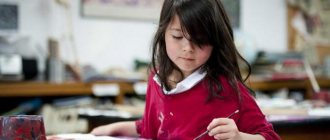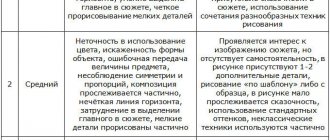Essence and concept
Thinking is knowledge of the world, carried out indirectly. It can be called cognitive activity, with the help of which an individual can not limit his thoughts and actions to the material world. He may not adhere to certain frameworks that arise when visualizing objects. The results of activity are manifested in actions, ideas, and statements.
Features of thinking:
- this process allows for creative processing of ideas about the world around us;
- reflection of the surrounding world, various phenomena is mediocre;
- the ability to see both individual phenomena, objects, and the connections established between them.
Indirect cognition occurs:
- When a person does not need to leave the house to find out what the weather is like outside, whether it is raining or sunny.
- If direct consciousness cannot produce results. This manifests itself as a result of the influence of x-rays, infrared, and ultrasound rays.
- When direct consciousness does not help to obtain information due to time frames. This is evident during archaeological excavations.
- If you want to expand the boundaries of knowledge.
- Actively manifests itself when conflicts arise.
Thinking what it is
Thinking is the highest level of human consciousness, allowing a person to navigate the world around him, accumulate experience, and form an idea of objects and phenomena. It is an internal system capable of modeling the patterns of the world around a person, predicting possible developments of events, analyzing what is happening and accumulating unique truths.
Main functions: setting a goal and planning its achievement, finding a way out of various situations, monitoring what is happening and assessing the degree of achievement of set goals based on personal motivation. In psychology, there are different types of thinking, both healthy and pathological.
Historical sketch
For the first time, questions about the study of thinking arose in ancient times. Scientists and philosophers of that time studied thought processes from the point of view of logic and philosophy. The most outstanding researchers of the ancient era who made a great contribution to the study were: Alcmaeon of Croton, Pythagoras, Hippocrates, Aristotle, Epicurus, Protagoras.
There were no significant discoveries during the Middle Ages. Active study began only in the 17th century. At the same time, thinking was considered an innate ability, which was considered individually, without the influence of the psyche. A teaching that has significantly influenced the study of thought processes is pragmatism. It appeared at the end of the 19th century. In the 20th century, followers of the Würzburg school began to engage in in-depth research. The practical experiments of this school were aimed at dividing thinking into separate stages.
Gestalt psychology studied productive thinking. At the same time, followers of behaviorism were engaged in research. They studied the skills that people used to solve various problems.
Examples
To better understand the practical activity of thinking, it should be illustrated. Let's give examples. Grandma is knitting a sock. A woman doesn’t think too much about how to make a loop or how to decrease a row. Hands trained by many years of practice know what to do. Experience helps a woman look at the TV and not at her product. At the same time, the result of grandmother’s activities will be very good. The socks will turn out first-class.
Another example of visual action-practical thinking is driving a car. An experienced driver does not think about which direction to turn now or which pedal to press. In the case of turning, the finger itself reaches for the button to turn on the flashing light. The process of driving, repeated daily and brought to automaticity, helps a person save energy on decisions made. The brain will work in energy saving mode until some extreme situation occurs in which full concentration of attention is required.
Classification
The thought process is classified depending on various factors. They appeared throughout the development of psychological science under the influence of various branches, teachings, and theories.
Kinds
Thinking can be divided into two large groups: theoretical and practical. The first includes abstract thinking, which is often called verbal-logical. It is built on judgments and concepts. The subject compares objects, situations, phenomena, analyzes them, based not only on his own judgment, but also on the opinions of others. This is only possible if a person ideally speaks and has an extensive stock of knowledge, skills, and abilities.
Practical types of thinking in psychology:
- Figurative. It is built on perception and ideas. Such thought processes are characteristic of architects, artists, perfumers, fashion designers, and poets. They begin to appear already at school age. Some figurative thought processes are observed in the behavior of higher animals.
- Visually effective. Manifests itself in external actions. Such thought processes are built on transforming the current situation to solve pressing problems.
Theories
There are several theories of thought processes that have both strengths and weaknesses:
- Associationist - based on the philosophical theory of the same name. Its goal is to make the mind simpler, reducing it to a set of elementary ideas and sensations. Associations are used to connect ideas and events. The main disadvantage of this theory is that with its help it is impossible to solve the problem of creative thinking. Because of this, creativity was considered innate and not acquired.
- Behaviorist. Followers of this theory argue that thinking is one of the forms of adaptation to new conditions. Behaviorists were criticized by researchers in other areas of psychological science because they took into account only observable behavior, rejecting what is hidden from view.
- Gestalt theory. The followers of this theory criticized the concept, according to which it was argued that the mind is a passive collection of primitive ideas that are united by associations. They studied the problems of the psychology of thought, describing them from the perspective of perception. Through several practical experiments, followers of this theory have provided clear distinctions between unproductive and productive thought processes.
- Peripheral theory. Her followers studied the peripheral nervous system. According to the theory, the human brain is one of the constituent parts of the thinking process. When perceiving new information, the psyche, body, and brain are involved.
- Psychoanalytic theory. The most famous teaching of Sigmund Freud affected the study of thinking. The scientist argued that after birth, narcissistic thought processes appear, which gradually turn into objective ones.
You can also highlight the cognitive theory of development, which was founded by Jean Piaget. The scientist argued that the manifestation of thinking depends on the biological processes of adaptation.
Forms
There are several forms of thinking:
- Judgment is a form by which the relationship between phenomena and objects is described. In addition, denial may occur.
- Inference is a form that allows you to draw various conclusions that are based on a number of judgments. Inferences can be deductive or inductive.
- A concept is another form of thinking, with the help of which essential relationships, connections, and properties of phenomena and objects are reflected.
In this case, inference refers to the highest form of manifestation of thought processes.
Levels
The division of thought processes into separate levels is due to one of the founders of cognitive psychology - Aaron Beck. Levels:
- Arbitrary thoughts are considered superficial, controlled, conscious.
- Automatic - these include stereotypes that are imposed on a person in the process of upbringing.
- Cognitive beliefs, basic schemas. These are deep thought processes. They arise in the area of the unconscious, which is why they are most difficult to change under the influence of external factors.
Difficulties
Visual and practical thinking is formed in a person without any effort on his part. The child learns to repeat the movements and then the actions of adults. This ability to learn through imitation helps a person to quickly and easily understand this world. But not everyone has the unity of sensory perception of theoretical thinking and practical activity. Each person developed under different conditions. People's teachers and approaches to education differed. As a result, not all individuals are able to understand each other well. What are the difficulties?
- Theorists focus their efforts on understanding the world through reasoning. People think abstractly, often completely abstracting themselves from the real world. The results of their activities sometimes surprise even the theorists themselves. This style of thinking does not allow people to understand more down-to-earth people who are accustomed to thinking about the mundane, and not about the sublime.
- Practitioners concentrate on the world of things. They realize the result of the creative impulse of theorists and cannot always understand how a person could be short-sighted. The miscalculations of theorists always catch the eye of people who deal with the technical aspects of work every day and can well imagine which projects are feasible and which are not.
Characteristic signs
Thinking has a number of characteristic features:
- By its nature it is a social phenomenon. This is due to the fact that to solve a problem people use different rules, concepts, laws that were formed as a result of the development of mankind.
- Thought processes are associated with language knowledge. With the help of language you can express thoughts. Using language skills you can explore the objective world.
- Thought processes are determined by the emotional and volitional aspects of the personality.
Definition
Practical thinking is a person’s ability to operate with accumulated knowledge and skills in order to perform a particular current task. The problems that practical thinking helps to solve are urgent. By developing a plan and setting goals for yourself, a person can easily cope with any difficult task. The person does not need to reinvent the wheel. She needs to solve urgent problems, and do it quickly. It is not always possible to build complex theories and then test them in practice. Where theoretical thinking fails, practical thinking begins. But sometimes the opposite happens. Sometimes practical thinking acts as the final stage of theoretical thinking.
How did our ancestors think? They used practical thinking. Through trial and error, people built their own homes, learned to hunt, and collect fruits and berries. Practical thinking is aimed at satisfying immediate needs. But sometimes it comes in handy in the long run. Practical thinking has been found even in animals in its infancy.
Violations
With the development of mental illness, disturbances in thinking processes may occur:
- Horse racing. They are characterized by answers without understanding the words, chaotic associations, and errors must be corrected only after focusing attention on them. In addition to this, distractibility increases.
- Inconsistency of judgment. The nature of judgments becomes unstable. Tasks are performed correctly, incorrectly, the process occurs one by one. Fluctuations in judgment appear with any changes in the conditions for performing tasks.
- Inertia. During the development of this disorder, a slowdown in mental processes is observed. Patients cannot answer questions normally and do so after a long pause.
- Slipping. It manifests itself in the fact that the patient, when solving problems, unexpectedly strays from the intended plan and gives preference to false judgments and associations.
- Responsiveness. It occurs more often in patients who suffer from cardiovascular diseases. It manifests itself as an inability to navigate in time and space. A person begins to consider various pictures as reality.
Properties
The development of practical thinking is facilitated by the individual’s conscious development of the necessary properties.
- Goal for implementation. The result of practical thinking should be the development of a ready-made solution to eliminate a problem or solve a problem. A person should not consider or simulate non-working or theoretical options. Of all the possible options, you need to choose the one that will help you quickly and with minimal effort achieve your goal.
- Motivation. A person must do his job well in order to achieve the required goal. A person can work to his full potential only when he is well motivated. A person should always know and understand what dividends the successful implementation of a project will bring to him personally.
- Using past experience. Only the person who does such work not for the first time can achieve good results in the implementation of any project. A person should always rely on his own experience, benefit from it and not repeat mistakes.
- Self-criticism. A person must notice his mistakes and correct them. A person must evaluate every step taken and planned. You must always be aware of whether the next action leads to the final goal or not. And if something goes wrong, you need to admit your mistake, correct it and continue moving in the chosen direction.
- Intuitiveness. Some actions a person should not think about. Work that is done automatically requires less energy and resources of the body. You can't always make the best decision on paper. Sometimes you have to make adjustments as the work progresses, and a person must be prepared for this both mentally and physically. If the target is knocked down, you need to quickly change the work strategy so that you can continue the project without slowing down the momentum.
Research methods
To obtain the information of interest, psychologists use several practical techniques:
- Observation - Using this technique, you can obtain data about a person's behavioral reactions. By applying the practice of self-observation, one can obtain information about how judgments are made.
- Conversations are used to obtain data about the subject’s attitude towards solving various problems.
- Testing is a technique used to determine the level of intelligence.
- Experiment - certain conditions are created around the subject in order to reproduce mental activity under the influence of surrounding factors and various stimuli.
Did you know?
- Experts believe that practice is not a productive activity. They call it intransitive action. It's surprising that poetry, drawing, writing music or choreographing dance are productive activities.
- People view practical activity not as activity, but as life. If you think about it, a person lives by work and only in work does he feel alive. The word “work” here refers to the process of practical thinking. A person, even switching channels on TV, is forced to use part of his brain resources.
- By the essence of freedom, many people mean freedom in choosing a job. A person cannot be idle all the time. The person will engage in some kind of activity, even if it is useless. The freedom to focus practical thinking on a chosen object or subject is a cherished dream for many.
- Practice is not an individual ability of any particular person. Experts believe that anyone can master any craft to one degree or another. It’s just that more talented people will need less time to master the material and get the first results, while others will need more time.
Development
It is believed that it is impossible to develop thinking in an adult, so all that remains is to accumulate various knowledge in order to be smarter, but this is a wrong opinion. You can develop your thinking processes at any age. Various exercises are used for this.
Methods for developing logic:
- Put two different objects in front of you and compare them. Write down all differences on a piece of paper. When making comparisons, consider various factors. The more differences are described, the better.
- Come up with two events that are not related to each other. Try to establish connections between them, describing as many logical chains as possible.
In addition to this, you need to read more books and comprehend what you read. Write your conclusions in a separate notebook. It is necessary to try to find the author’s contradictions in order to try to challenge them. It is recommended to play more chess, sea battle, checkers.
Exercises for developing imaginative thinking:
- Recreation of images. Mentally imagine your loved one. Describe its features. After this, imagine that this person is happy or crying. Remember any plant or tree you remember. Describe it in detail. Imagine how a tree or plant will change at different times of the year. Supplement the practice with memories of sounds.
- Development of creative imagination. Introduce a mathematical symbol. It must not be a real-time item. Mentally give it life. To do this, you need to come up with habits, character, goals, behavior. Write a short story about how a living mathematical symbol spends his day. The same can be done with various images, symbols, and sounds. This allows you to develop your imagination and open access to it.
Exercise helps develop the psyche.
They can be practiced both in childhood and in adults. To study the relationship of a person with other objects, to study the inner side, thought processes are launched. Thinking helps people evaluate the world around them indirectly, which is the basis for creative endeavors.
Tasks
A person who is engaged in practical activities cannot work if he does not set goals for himself. What are they?
- Setting goals. A person must always understand where he is going. Practical thinking presupposes a finished product of activity. To prevent a person from straying from the chosen route or losing his bearings, he needs to break the goal into small parts. Subgoals are necessary in large projects that cannot be completed in a short period of time. The breakdown is done not only to improve understanding of the prospects for work, but also for clarity and more accurate calculations at the planning stage.
- Creating plans. The practical method of thinking involves developing and writing plans. A person must break the project into parts, and then work out a step-by-step plan to achieve the main goal. Here you need to take into account that plans are not only short-term, but also long-term. The development of each project must be approached individually. You should take into account the essence of the work, budget, labor, deadlines, materials, etc. A good specialist, before taking on any task, even a small one, will plan the progress of the work step by step.










